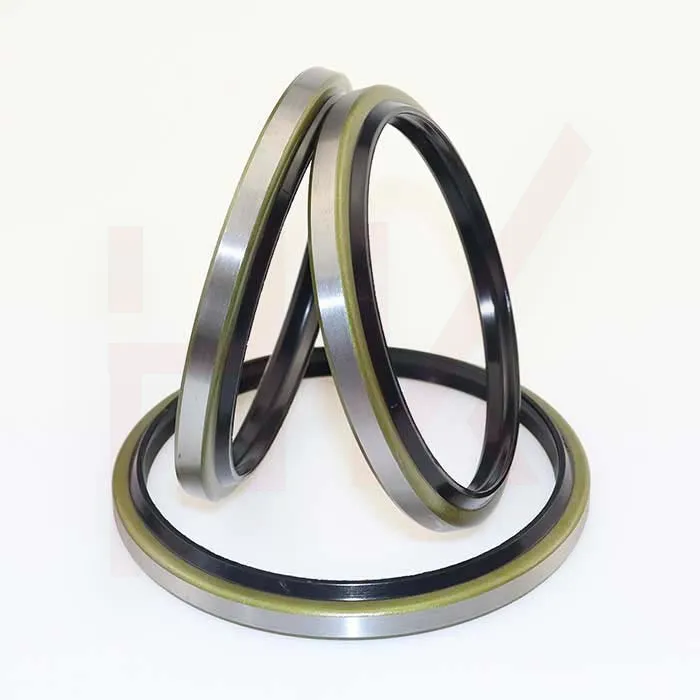10 月 . 19, 2024 01:32 Back to list
Choosing the Right Materials for Hydraulic Cylinder Seal Kits
Understanding Hydraulic Cylinder Seal Kit Materials Key Considerations for Optimal Performance
Hydraulic cylinders are vital components in various machinery and equipment, allowing for powerful motion and force generation in applications ranging from heavy construction machinery to precision engineering tools. The effectiveness and longevity of these hydraulic systems largely depend on the quality of the seal kits used within the cylinders. Seal kits are designed to prevent hydraulic fluid from leaking and ensure the smooth operation of the cylinders under varying pressures. One of the critical factors influencing their performance is the material from which these seals are made. In this article, we will explore the different materials used in hydraulic cylinder seal kits, their properties, and why material selection is crucial for optimal performance.
Common Materials for Seal Kits
1. Nitrile Rubber (NBR) Nitrile rubber is one of the most commonly used materials for hydraulic seals due to its excellent resilience, high abrasion resistance, and compatibility with various hydraulic fluids. It can withstand temperature ranges from -30°C to 100°C, making it suitable for a wide array of applications. However, it may not perform well in high-temperature environments or in contact with certain chemicals.
2. Fluoroelastomer (FKM) Often referred to by the brand name Viton, fluoroelastomers are another popular choice for hydraulic seals. They offer superior resistance to high temperatures, typically ranging from -20°C to 200°C, and are highly resistant to ozone, weathering, and various chemicals. This makes FKM seals ideal for applications involving aggressive fluids and high operating temperatures, although they can be more expensive compared to nitrile seals.
3. Polyurethane (PU) Polyurethane seals are known for their outstanding abrasion resistance and dynamic performance capabilities. They can operate effectively in a temperature range of -30°C to 90°C. The unique properties of polyurethane allow it to maintain its shape under high pressure, making it suitable for heavy-duty applications. However, their chemical resistance may not be as robust as that of fluorinated rubber.
4. PTFE (Polytetrafluoroethylene) PTFE seals are renowned for their exceptional chemical resistance and are often used in applications involving aggressive fluids that would degrade other materials. Additionally, PTFE has a low coefficient of friction, which allows for smooth movement within the cylinder. However, PTFE seals may require additional backing materials or reinforcement to withstand pressures effectively.
5. Composite Materials In some high-performance applications, composite materials combining different elements are used to optimize the properties of the seals. These composites can be engineered to provide a balance of durability, flexibility, and chemical resistance while addressing specific application needs.
hydraulic cylinder seal kit material

Factors Influencing Material Selection
When choosing seal kit materials, several factors must be considered
- Temperature Range Every hydraulic system operates within a specific temperature range
. Selecting a material that can withstand these temperatures without degrading or losing performance is crucial.- Chemical Compatibility The type of hydraulic fluid used can significantly affect seal longevity. Understanding the chemicals involved and their compatibility with seal materials helps prevent premature failure.
- Pressure Levels Hydraulic cylinders operate under varying pressure conditions. The selected material should be capable of maintaining integrity and sealing performance under specific pressure levels.
- Environmental Conditions Factors such as exposure to abrasive particles, moisture, and UV radiation can impact seal performance, making it essential to select a material that can withstand these conditions.
Conclusion
In conclusion, the selection of hydraulic cylinder seal kit materials is a critical consideration that directly influences the performance, reliability, and maintenance of hydraulic systems. Understanding the properties and applications of different materials—ranging from nitrile rubber to PTFE—provides engineers and technicians with valuable insight to make informed decisions. By carefully evaluating the operational environment, temperature ranges, chemical compatibility, and pressure levels, one can ensure the longevity and efficiency of hydraulic systems, ultimately enhancing productivity and reducing maintenance costs.
-
The Power of Advanced Sealing: High-Pressure Solutions for Modern Machinery
NewsOct.29,2024
-
Optimizing Machinery with High-Performance Oil Seals
NewsOct.29,2024
-
Maximizing Machinery Efficiency with Advanced Oil Seals
NewsOct.29,2024
-
Ensuring Equipment Longevity with Quality Oil Seals
NewsOct.29,2024
-
Enhance Equipment Performance with Quality Oil Seals
NewsOct.29,2024
-
Custom Oil Seals for Specialized Machinery Needs
NewsOct.29,2024
-
The Role of Wiper Seals in Dust Sealing and Oil Protection
NewsOct.20,2024
Products categories
















